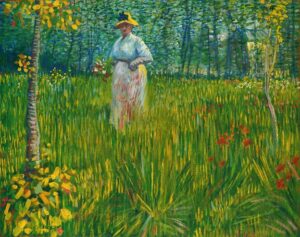
The selection of the right paper and ink to use on your art prints is an art in itself. These factors will influence the way colors, textures, and details are presented, and they will affect not only the look of your print but also its durability and worth. When artists are selling their work online, the right materials will make each work leave a lasting impression.
1. Knowing the Kinds of Fine Art Paper

The type of base you use on your prints has a lot of influence on the end result. The most popular options include the following:
Cotton Rag Paper
Cotton rag paper is a favorite because of its soft finish and durability, especially when used to print fine art gicllee and photographic prints. It has archival properties so that art can last decades without yellowing and the texture is subtle which gives it a high-end feel that works well with watercolors, sketches, and mixed media.
Alpha Cellulose Paper
Alpha cellulose paper is less costly but still in demand because it resembles cotton rag, although it is cheaper. It can be used on vivid digital prints, posters, and artwork where the price is a factor.
Canvas
Canvas prints are becoming more and more popular, particularly with photography and big artworks. Canvas has textured surfaces and strong composition, which makes it a good choice when you want to add tactile dimension and depth to a dramatic piece and gallery-style mounting.
Specialty Papers
Paper can be textured, glossy, metallic, and matte, all have different appearances. Textured papers can add to traditional and impressionistic pieces, and matte and glossy papers can make colors more or less prominent and details more or less apparent.
For artists seeking to automate and streamline the printing and shipping process without sacrificing quality, partnering with print on demand art from Artelo offers a compelling solution. Based in the U.S., Artelo manages printing and framing entirely in-house, ensuring consistent results for artists and businesses.
2. Choosing the Best Ink to be used in Art Reproduction
Pigment-Based Ink
Known to be long-lasting, pigment-based inks are less likely to fade and are made up of fine particles of color. These inks are used to get deep, rich colors and are most suitable in gallery and museum quality prints-suitable to both monochrome and full color reproductions.
Ink Dye
Dye-based inks are less archival, but they produce intense color vibrancy and smooth gradients, which are ideal in temporary displays and lower-cost prints. They are good to use on posters, greeting cards and commercial art but they tend to fade quicker when exposed to sunlight.
UV and Eco-Solvent Inks
UV-cured and eco-solvent inks are used on outdoor installations or where greater durability is needed. They are frequently applied in murals, signage, and banners.
3. Matching Paper and Ink: The Main Considerations
- Art Medium: Watercolors, pastels and traditional paintings tend to look best on textured cotton rag, whereas sleek photographs or digital illustrations can look best on glossy or smooth matte papers.
- Display: When works are to be displayed in galleries, to collectors, or to be resold, archival papers and pigment inks are necessary. Alpha cellulose papers with dye inks can be used in the mass-market, lower-cost prints.
- Color Accuracy: In case your art depends on the details or correct colors, invest in calibrated print profiles and test prints.
- Longevity Requirements: If your prints will be shown to collectors or displayed over the long term, longevity and fade resistance should be your priority; pigment inks on acid-free paper are the best choice.
4. Automating Art Fulfillment of High Quality

With the increase in print on demand, artists and art businesses have more control and flexibility. Partnerships with companies such as print on demand art through Artelo make the process of fulfillment easier without compromising quality. Artelo creates fine-art prints and frames all in-house and ships orders under each artist or business brand. They integrate with Shopify, Etsy, and customizable APIs so that your art can reach your clients as fast as possible, always in the most beautiful, long-lasting form.
Ask your supplier to provide you with sample swatches or proof prints before making your final decisions. This allows you to contrast texture, hue and general feel, so that your vision is brought to life in each print.
Conclusion
The combination of the right paper and ink takes your art to the next level, preserves its integrity, and pleases customers. Knowing your choices and using the knowledge of the experts, you can automate the delivery without compromising the quality of your art. Be selective, be adventurous, and make sure that your prints have a voice, today and in the future.







